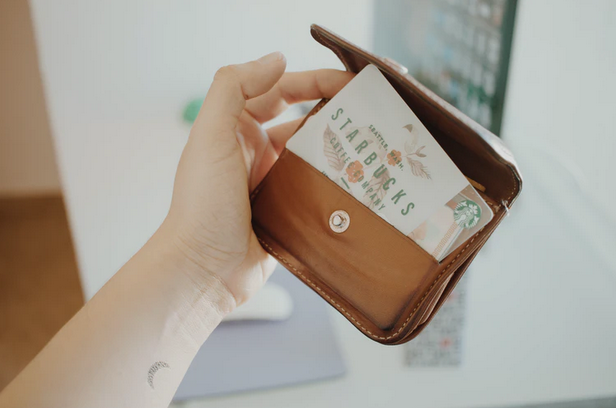For busy marketers: A quick and easy read on nudge theory – what it is, how nudging works, and how it can go wrong. Plus: Examples!
What is nudge theory?
Nudge theory is a behavioural science concept brought to mainstream attention by Cass Sunstein and Richard Thaler in their book Nudge: Improving Decisions About Health, Wealth, and Happiness.
Nudge theory is used in the design and presentation of choices, i.e. choice architecture to either encourage positive change in human behaviour or assist people in making good decisions.
So what is nudging? Nudging is about how seemingly minor adjustments – the application of heuristics – can act as triggers that influence decision-making—and bring significant results.
But that’s not all – once you’ve become aware of what nudging is, you’ll spot it everywhere. From chit-chats with a friend through to advertisements and political campaigns – you’ll even notice it the next time you go to the grocery store.
You might also like: Message Framing: The Basics
Why is it everywhere? Because it works really well and, by comparison, doesn’t cost a fortune. It’s all about minor modifications to get to a desired result.
And because nudging takes our spontaneity into consideration, that is our inclinations and realities (in other words that we aren’t always rational in our choices), resistance and confrontation is minimized.
Unfortunately, nudging can also be abused. Be ethical and use it responsibly – it shouldn’t “undermine welfare, autonomy, and dignity”. As Thaler says, nudge for good.
TIP: An ethical and good nudge is one that follows these three guiding principles.
» It is transparent and never misleading.
» It is easy to opt out of the nudge – it should ideally take no more than one mouse click.
» The behaviour you are encouraging will improve the nudged individual’s welfare.?
The best marketers won’t and don’t deviate from these principles to bring great results.

Traditional (“old-school”) approaches vs modern nudging
What is the difference between an “old-school” approach and nudging for behavioural change? It can be summarized as follows:
- Traditional approaches are direct and obvious – enforced, if you will – whereas nudging is indirect and subtle.
- Old-school methods were about instruction and giving direction. Modern methods are focused on educating and informing.
- The former approach incorporates “spin”, emphasis or a particular slant. Nudging is more on translation and interpretation.
- Rather than “sell, negotiate, push, pull”, nudging takes an “offer, wait, give space” approach.
- The traditional approach might offer encouragement whereas nudging references peer activities (“social proof”).
- Rather than being talked down to as with the old-school approach, nudging involves discussion.
- Finally, the traditional method might entail selective truth. The modern take is openness and transparency. That is, there’s nothing to hide or being withheld.
You might also like: Social Proof: An Introduction

How does nudging work?
While we would like to think that we’re all rational people, the reality is we aren’t – we’re irrational beings.
We are driven by habits, impulse, emotions, and herd mentality. We’re also easily confused and prone to inconsistency.
We’re human and we make mistakes.
What does that mean? Our behaviour is determined by several factors.
- We mainly use intuition in our decision-making.
- Our decisions are affected by heuristics (mental shortcuts) and biases.
- We are social beings.
- We are emotional.
- Our decisions are impacted by the ‘choice environment’.
In other words the influences that drive our behaviour are often unconscious. So when we make decisions, most of the time those decisions are made in what is known as System 1 thinking.
System 1 thinking is the “fast” type of thinking. We use it to make quick decisions based on our instincts or emotions. It’s automatic. For example: It’s the thinking you use in order to catch a ball flying your way. It is this type of thinking that nudging affects.
System 2 thinking, on the other hand, is the “slow” process that typically involves more effort. It’s also more logical. You’re using system 2 if you find that you have to concentrate.
While we would like to think that system 2 dictates our thinking and decision-making processes, most often and in most cases, system 1 rules.
Examples of nudge theory in action
Because it’s used by advertisers, marketers, politicians, and governments, nudging can be found everywhere – quite literally. You might have noticed them in practice; others might have been so subtle that it didn’t even register.
Here are a few examples.
- Has the cashier at your local grocery store ever asked you if you’d like to donate your change – or $2 – for a good cause?
- When you were out to grab a quick bite at your favourite burger chain, were you asked if you’d “like fries with that” or to upsize your order?
- While searching for hotels on your preferred portal, did you notice a little prompt stating that the hotel was likely to sell out soon or that there is only 1 room remaining in that category on your dates?
- When making an online purchase, is the default for receiving marketing emails set to YES? In other words, are you asked to opt-out rather than opt-in for a certain choice?
- Have you ever clicked through to read an article purely based on how the title was worded? For example: “Read this to find out how you can increase sales by 50% in just one week!”
- Do you return to the same coffee shop daily to collect stamps for a “buy 10, get your 11th coffee free” card?

All of these are examples of nudging in practice and in an everyday context.
It happens in person, in our conversations, in print, and even where you wouldn’t expect it – like airport bathroom urinals and in the placement of more garbage bins. They’re also made more visible and ‘fun’ to use, e.g. to encourage proper disposal rather than have to discourage littering.
Watch out though, because nudging can go wrong!
With all that said, nudging isn’t a behavioural change miracle worker and there’s no guarantee it always works.
When they’re poorly thought out and not tested, they can go awfully wrong—enough to damage your reputation and credibility.
Here’s how a nudge can go wrong.
Whether by (intentional) design or simply as an oversight, it’s incredibly difficult to opt-out of the default opt-in setting.
For example: You get a ton of new newsletter subscribers thanks to the default choice being to subscribe to your newsletter. But when it comes to opting out, it’s a lengthy process. In fact, they can’t opt out with just one click.
Instead, they have to call the company, which is based overseas, during the company’s business hours — which is hard to do because of time difference! Then the subscriber has to explain why he wants to opt-out before he can be removed from the mailing list. That doesn’t leave a good taste in the mouth.
You might also like: Great examples of newsletter sign up copy
The nudge might only work half way.
For example: The health department might set a goal to encourage healthier eating, so supermarkets are requested to place fresh produce by the entrance. They should also make that part of the store visually attractive with appealing signage (“heart-healthy”), beautiful displays, and so on.

It’s effective in getting shoppers to buy more fruit and vegetable. But what happens when those shoppers leave the store? Will those fruits and vegetables actually get consumed or will it sit in the fridge for days then end up in the bin? If so, that’s a nudge that only worked half way.
The language or design is condescending.
That’s pretty self-explanatory. The nudge should not treat the individual as weak-minded or lacking in self-control.
To conclude, getting a nudge just right is incredibly challenging. It might be too weak and have no measurable impact on consumers. Or it can be too strong and backfire on you or anger consumers. And other times, it can simply be a nudge that consumers already know all-too-well leaving them immune to its influence.